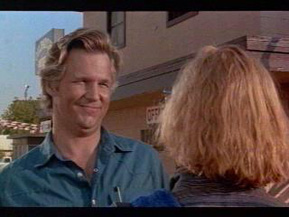|
|
Chapter Two: Texasville vs. The Evening StarBy Brett Ballard-BeachJuly 7, 2011
There is some mystery as far is this concerned. Coming from a background in television, it would seem natural for Brooks to favor conventional sitcom rhythms and clichéd sentiment and characters who have oversized quirks or a semblance of psychological depth, but never both. And at times he does. But paying close attention to something like Terms of Endearment can be a little unsettling. It walks like a crowd-pleaser and talks like a crowd-pleaser, but in its underlying rhythms, the way it captures how 25 years ago is now today, and your wedding night has been buried in a move to the Midwest and three children under the age of 10, it always registers as more off-kilter than you expect, like the sprung rhythms and long takes and deadpan humor of his friend and sometimes collaborator Albert Brooks. Or like life itself, I suppose. Harling’s narrative is filled with herky-jerky plotting (characters important in the first half drop out of sight later on), an incongruous mix of physical humor, insults, and tears, and navel-gazing for nostalgia itself. The chief project of MacLaine’s character, Aurora Greenway, in the story, is to assemble her mountain of photos and clippings into yearbooks - which registers as nostalgia for the first film, and only serves to remind the viewer of how much better it was. Nicholson’s eight-minute appearance late in the film is a prime example/offender. It injects the storyline with a stand-alone actors’ tango, and lets the pair recreate the driving the car along the beach scene from Terms of Endearment, but Nicholson only has time to register as Jack, not Garrett Breedlove, particularly at one moment where he raises his eyebrows and laughs his incredulous laugh after a one-liner.
|

|
|
|

|
Sunday, May 5, 2024
© 2024 Box Office Prophets, a division of One Of Us, Inc.


